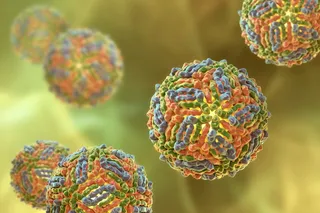This story was originally published in our May/June 2022 issue as "Danger in Paradise." Click here to subscribe to read more stories like this one.
Jacques “Leokane” Pryor loved his life in Hana, a remote Eden on the island of Maui, known for graceful seabirds and gentle rains. By day, he worked outdoors; at night, using his Hawaiian name, he sang and performed native dances at a hotel. In Hana, Jacques was content. Then his perfect life as a keiki o ka ‘aina (“child of the land”) changed.
First came the itch, fever and painful joints, followed by a migrating rash. Over several weeks, his doctor became increasingly perplexed. Then serious headaches set in. Jacques called Chad Meyer, a physician who had once practiced in Thailand and seen his share of unusual ailments.
Meyer listened, scanned Jacques’ labs, then spoke with surprising force. “What you need is a spinal tap. ...















